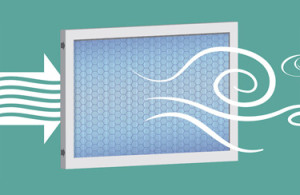 Even with our year-round gorgeous weather in Raleigh NC, most of us spend much of our time indoors, making improving your indoor air quality a priority. The air we breathe in our offices, schools & homes can put us at risk for health problems. The pollutants can be as varied as gases, chemicals, or living organisms like pests and mold. Some pollutants cause health problems such as headache, sore eyes, burning in the nose and throat, or fatigue. Other pollutants can contribute to more serious allergy symptoms, respiratory illnesses, and other threatening long-term conditions. Sometimes individual pollutants at high concentrations, such as carbon monoxide, cause death. High temperature and humidity levels can also increase levels of some pollutants. Inadequate ventilation can increase indoor pollutant levels by not bringing in enough outdoor air and diluting emissions from indoor sources.
Even with our year-round gorgeous weather in Raleigh NC, most of us spend much of our time indoors, making improving your indoor air quality a priority. The air we breathe in our offices, schools & homes can put us at risk for health problems. The pollutants can be as varied as gases, chemicals, or living organisms like pests and mold. Some pollutants cause health problems such as headache, sore eyes, burning in the nose and throat, or fatigue. Other pollutants can contribute to more serious allergy symptoms, respiratory illnesses, and other threatening long-term conditions. Sometimes individual pollutants at high concentrations, such as carbon monoxide, cause death. High temperature and humidity levels can also increase levels of some pollutants. Inadequate ventilation can increase indoor pollutant levels by not bringing in enough outdoor air and diluting emissions from indoor sources.
Understanding and controlling some of the common pollutants found in offices, schools & homes may help improve your indoor air quality and reduce your family’s risk of health concerns related to indoor air quality (IAQ).
- Secondhand smoke comes from burning tobacco products. It can cause cancer and serious respiratory illnesses.
- Radon is a radioactive gas that is formed in the soil. It can enter indoors through cracks and openings in walls and floors that are in contact with the ground. It is the leading cause of lung cancer among nonsmokers, and the second leading cause of lung cancer overall. If you have tested your Raleigh home for radon and have found elevated levels, check out this Consumer Guide To Radon Reduction booklet from the Environmental Protection Agency.
- Molds are living things that produce spores that float in the air, land on damp surfaces, and grow. Molds can trigger asthma attacks. With our humid weather in Raleigh, NC, mold can be a concern for many families living in the Triangle.
- Volatile organic compounds (VOCs) are chemicals found in paints and lacquers, paint strippers, cleaning supplies, pesticides, building materials, air fresheners and dry-cleaned clothing. These chemicals evaporate into the air and cause headaches, eye irritation and nausea. Some of them can cause cancer.
What You Can Do To Improve Indoor Air Quality:
- Usually the most effective way to improve indoor air is to eliminate individual sources or reduce their emissions.
- Change your AC filters regularly. If left unattended, your air filter will simply not work properly, allowing pollutants into your home. Additionally, the workload of your air conditioner will increase dramatically as it tries to force air through a clogged filter, lowering your A/C unit’s life span or damaging essential HVAC components. To avoid AC repairs or complete replacement of your air conditioner, choose the right air filters and change them monthly, or at least every 45 days.
- Keep indoor humidity between 30 and 50 percent. To see if your home is at a good level, use a moisture or humidity gauge, available at most hardware stores. In Raleigh, and all over North Carolina, especially during the warmer months, our humidity levels can be problematic. To decrease humidity, first and foremost, ventilate. When vent fans are present, make sure to turn them on and/or leave them on longer. In extremely moist areas, such as bathrooms, crack a window for a few minutes to dry the air out. There are a few types of dehumidifiers that utilize different technologies that can pull humidity out of a damp space. Those types are Desiccant dehumidifiers, Mechanical/Refrigerant dehumidifiers, and Peltier dehumidifiers. Finally, air-conditioning drain lines and drip pans should be kept clean and unobstructed.
- Finally, control the sources of pollution for best indoor air quality. Always ventilate and follow manufacturers’ instructions when you use products or appliances that may release pollutants into the indoor air. Ventilate, open windows and doors, and whenever possible, increase the amount of fresh air brought inside your home.





